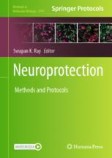Search
Search Results
-
Elucidation of Site-Specific Ubiquitination on Chaperones in Response to Mutant Huntingtin
Huntington's disease (HD) is one of the prominent neurodegenerative diseases, characterized by the progressive decline of neuronal function, due to...

-
The distribution and density of Huntingtin inclusions across the Huntington disease neocortex: regional correlations with Huntingtin repeat expansion independent of pathologic grade
Huntington disease is characterized by progressive neurodegeneration, especially of the striatum, and the presence of polyglutamine huntingtin (HTT)...

-
Cell-type-specific CAG repeat expansions and toxicity of mutant Huntingtin in human striatum and cerebellum
Brain region-specific degeneration and somatic expansions of the mutant Huntingtin ( mHTT ) CAG tract are key features of Huntington’s disease (HD)....

-
Glyceraldehyde-3-Phosphate Dehydrogenase Facilitates Macroautophagic Degradation of Mutant Huntingtin Protein Aggregates
Protein aggregate accumulation is a pathological hallmark of several neurodegenerative disorders. Autophagy is critical for clearance of...

-
Huntingtin HTT1a is generated in a CAG repeat-length-dependent manner in human tissues
BackgroundThe disease-causing mutation in Huntington disease (HD) is a CAG trinucleotide expansion in the huntingtin ( HTT ) gene. The mutated CAG...

-
Imaging and Assay of the Dynamics of Cytotoxic Huntingtin (HTT) Protein Aggregates Regulated by lncRNAs
Huntington’s disease (HD) pathogenesis involves deregulation of coding and noncoding RNA transcripts of which the involvement of long noncoding RNAs...
-
Immunohistochemical expression and neurochemical phenotypes of huntingtin-associated protein 1 in the myenteric plexus of mouse gastrointestinal tract
Huntingtin-associated protein 1 (HAP1) is a neural huntingtin interactor and being considered as a core molecule of stigmoid body (STB). Brain/spinal...

-
RNA-seq analysis reveals significant transcriptome changes in huntingtin-null human neuroblastoma cells
BackgroundHuntingtin (Htt) protein is the product of the gene mutated in Huntington’s disease (HD), a fatal, autosomal dominant, neurodegenerative...

-
Mutant Huntingtin Impairs Pancreatic β-cells by Recruiting IRS-2 and Disturbing the PI3K/AKT/FoxO1 Signaling Pathway in Huntington’s Disease
Patients with Huntington’s disease (HD) have an increased incidence of diabetes. However, the molecular mechanisms of pancreatic β-cell dysfunction...

-
Accumulation of Endogenous Mutant Huntingtin in Astrocytes Exacerbates Neuropathology of Huntington Disease in Mice
Selective neuronal accumulation of misfolded proteins is a key step toward neurodegeneration in a wide range of neurodegenerative diseases, including...

-
Discovery of sultam-containing small-molecule disruptors of the huntingtin–calmodulin protein–protein interaction
The aberrant protein–protein interaction between calmodulin and mutant huntingtin protein in Huntington’s disease patients has been found to...

-
Cerebrospinal Fluid Biomarkers in Huntington’s Disease
Huntington’s disease (HD) is a devastating neurodegenerative disorder caused by a CAG repeat expansion mutation in the HTT gene that leads to...
-
Astrocytes from cortex and striatum show differential responses to mitochondrial toxin and BDNF: implications for protection of striatal neurons expressing mutant huntingtin
BackgroundEvidence shows significant heterogeneity in astrocyte gene expression and function. We previously demonstrated that brain-derived...

-
Comparison of Huntington’s disease phenotype progression in male and female heterozygous FDNQ175 mice
Huntington’s Disease (HD) is an inherited autosomal dominant neurodegenerative disorder that leads to progressive motor and cognitive impairment due...

-
Correlative light and electron microscopy suggests that mutant huntingtin dysregulates the endolysosomal pathway in presymptomatic Huntington’s disease
Huntington’s disease (HD) is a late onset, inherited neurodegenerative disorder for which early pathogenic events remain poorly understood. Here we...

-
Dietary fasting and time-restricted eating in Huntington’s disease: therapeutic potential and underlying mechanisms
Huntington's disease (HD) is a devastating neurodegenerative disorder caused by aggregation of the mutant huntingtin (mHTT) protein, resulting from a...

-
The cholesterol 24-hydroxylase activates autophagy and decreases mutant huntingtin build-up in a neuroblastoma culture model of Huntington’s disease
ObjectiveCompromised brain cholesterol turnover and altered regulation of brain cholesterol metabolism have been allied with some neurodegenerative...

-
Considerations and Advances in Huntington’s Disease Clinical Trial Design
The characterization of the Huntingtin gene in 1993, 10 years after it was the first disease-associated gene to be mapped to a chromosome in humans,...
-
Gossypol, a novel modulator of VCP, induces autophagic degradation of mutant huntingtin by promoting the formation of VCP/p97-LC3-mHTT complex
Huntington’s disease (HD) is an autosomal dominant neurodegenerative disorder caused by toxic aggregates of mutant huntingtin protein (mHTT) in the...

